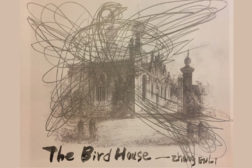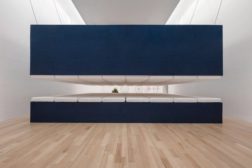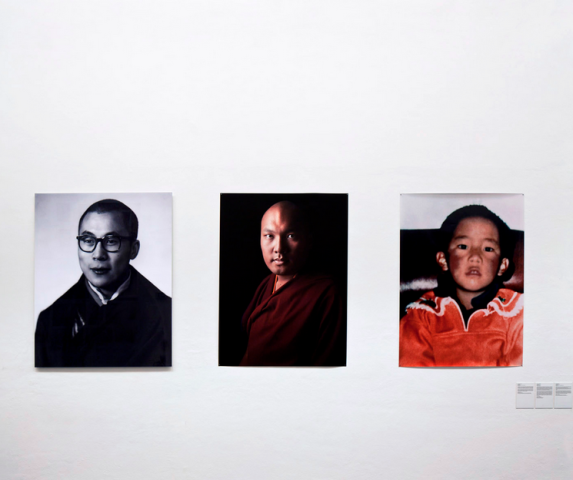



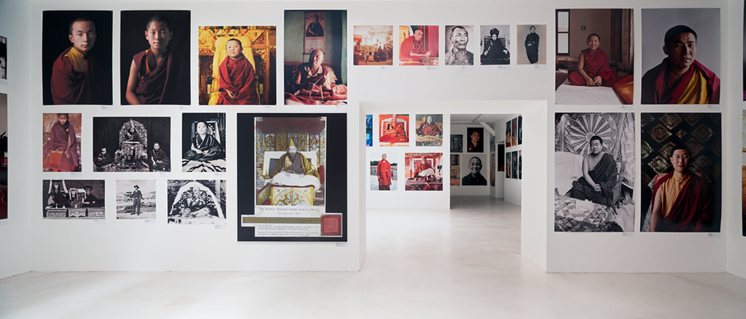
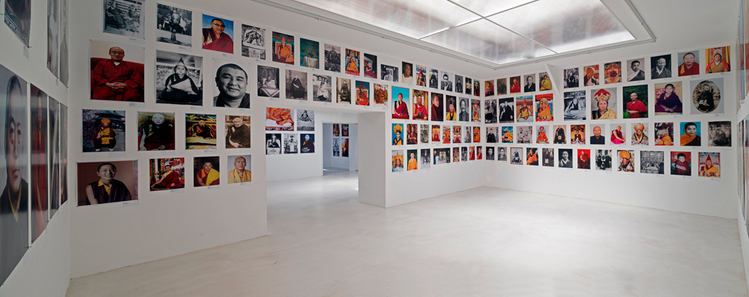
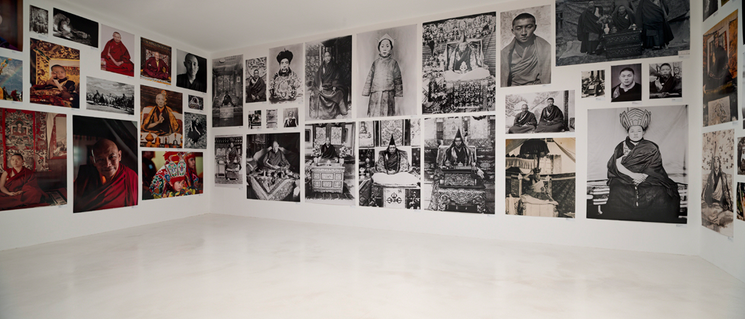
Tulkus 1880 to 2018 by Paola Pivi
Tulkus 1880 to 2018 brings together photographic portraits of tulkus dating back to the early days of photography until today. In Tibetan Buddhism, a tulku is the recognized reincarnation of a previous Buddhist master (a highly realized teacher or lama, e.g. H.H. the Dalai Lama or H.H. Karmapa) who is able to choose the manner of their rebirth and can often reveal the place of their next birth by means of cryptic clues.
This project (a work in progress) aims to achieve a comprehensive survey of most, if not all, tulkus belonging to the various Buddhist and Bonpo schools, in all the areas of the world where Tibetan Buddhism is practiced. A complete photographic archive of this kind has never been compiled before.
It is currently believed that there are over two thousand tulkus. Les Bains du Nord, FRAC Bourgogne, hosts the third exhibition of the project with more than 1000 photographs.
Previous exhibitions hosted by:
Castello di Rivoli Museum of Contemporary Art
Turin, Italy
November 9, 2012–January 6, 2013
Witte de With | Center for Contemporary Art
Rotterdam,
The Netherlands
January 25–May 5, 2013
The portraits exhibited are exactly the same kind as those that are very common in Tibetan culture and visible in monasteries, homes and shops close to monasteries: single portraits of the tulku sitting on a throne in monastic surroundings or single portraits of the face of the tulku. These photographs hold spiritual value and are holy for Buddhists. It is believed that a photograph of the tulku has the same power as the tulku themselves.
Tulkus are collectively revered for holding the lineages of oral transmission of all of the Buddha’s teachings, which have been handed down through many generations. Most often they are referred to as Rinpoche or ‘precious one’.
To read more about the project see curator Davide Quadrio’s forward here.
This project is a non-profit and fully funded by Paola Pivi, Karma Lama, Davide Quadrio, Artissima, Torino; Massimo De Carlo, Milan/London; Galerie Perrotin, Paris, New York, Hong Kong; Witte de With Center for Contemporary Art and AMMODO, Rotterdam; Photographic laboratory Grieger, Düsseldorf, FarEastFarWest Collection and other generous anonymous donors.
In 2018, or upon completion, all borrowed photographs will be returned to their owners, and the remainder of the project and related research will be donated to a single institution to be chosen with the stipulation that the project must belong to and be available to the Tibetan people. Advice will also be requested of His Holiness the Dalai Lama.
With photos by:
Daniel Kuma Bärlocher; Das Brothers; Sue Byrne; Alexandra David-Néel; Don Farber; Virginia Farnsworth; James Giabrone; Jesse Goode; Marion Griebenow; Thomas L. Kelly; Kinsey Bros; Vijay Kranti; Tracy Howard; Mr. M. Linden; Heather Lindquist; Marvin Moore; Melina Mulas; Tashi Nangchen; Sarah Orbanic; Tashi Paljor; Tenzing Paljor; Matthew Pistono; Claire Pullinger; Raghu Rai; Matthieu Ricard; Joseph Francis Charles Rock; Tim Roodenrys; Ritu Sarin and Tenzing Sonam; David Sassoon; Sandra Scales; Jurek Schreiner; Albert Shelton; Tseten Tashi; Michelle Thuy Do; Gursed Tserenpil; David Tucker; Neal Watkins; John Claude White; David Zimmerman | and many more.
This project would not have been possible without the full time, dedication and collaboration of Paola Pivi’s husband, the Tibetan composer Karma Lama (Culture Brothers), and the precious and generous participation of hundreds of people and institutions in many countries.
This project also benefits from the extraordinary consultation of the illustrious Tibetan historian Tashi Tsering, Director of Amnye Machen Institute, Tibetan Centre for Advanced Studies, Dharamshala, India.
To see a full list of contributors see here.
Images from the following institutions:
Installation View Photo: Attilio Maranzano
FRAC, Bourgogne
Installation View Photo: Attilio Maranzano
Courtesy Witte de With, Center for Contemporary Art
Installation View Photo: Attilio Maranzano
Courtesy Castello di Rivoli, Museo d’Arte Contemporanea
To see more images visit the project’s site here.
